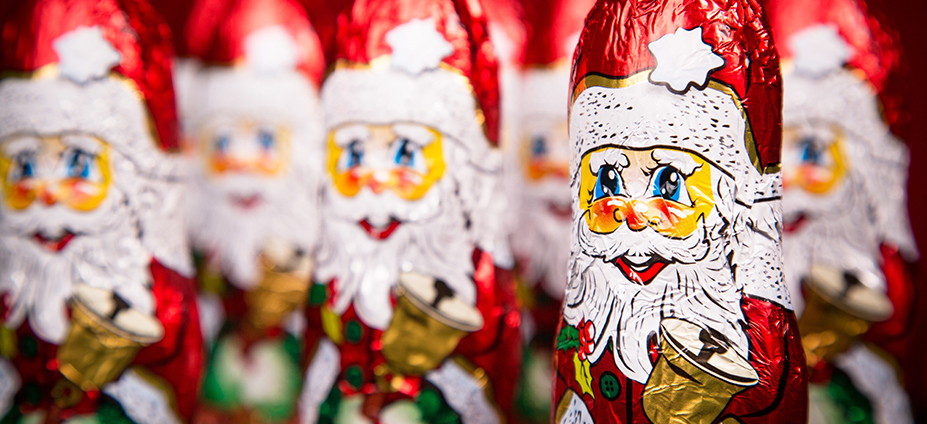What chocolate is Santa bringing this year?
Every year around Christmas, hundreds of millions of foil-packed chocolate Santas are sold worldwide. A symbol of the festive season, a promise of joy, holidays, family traditions, Christmas food and gifts.
According to the EAFA*, the total area of the thin aluminium foil used to pack and protect all the chocolate Santas produced in Europe (2019) is four million square metres. That equates to about 740 football pitches, or a 4,000 kilometre long aluminium strip that’s one metre wide!
And beneath the glittery foil, the sweet chocolate. But what are we actually eating?

Since the turn of the new millennium, consumer organisations in various countries, including Germany, have analysed different foods and Christmas sweets, such as chocolate Santas, to see whether they contain any residues of mineral oil. The focus is particularly on MOAH, Mineral Oil Aromatic Hydrocarbons, as some PAHs (polycyclic hydrocarbons) are considered to be carcinogenic.
The results of the analyses indicated MOAH of varying levels, also in chocolate Santas. The results have come in for some tough debate. Facts appear to have been less important than sensational headlines. Due to the complexity of the analysis methods for MOAH in foods, there was some disagreement about the levels that had been found.
One positive that has come from the debate, however, is that there is now more focus on reducing any possibility that food is contaminated by substances that could potentially be harmful to consumers. Producers have taken their responsibility, and European authorities have also taken a good look at these issues.
MOAH contamination can come from a variety of different sources in the overall production process: mechanical equipment when harvesting the raw ingredients, jute sacks that have been prepared with oil, direct or indirect contact with recycled packaging materials or plastic, dyed print that contains mineral oil on the packaging, auxiliary additives in the food production process, and so on.
In May 2022, the European Commission Standing Committee on Plants, Animals, Food and Feed (PAFF) published a summary report introducing recommended limits for MOAH in food, with immediate effect.
This means that this year’s chocolate Santas come with hope of a better future! One with even safer food handling, more knowledge, and a focus on sources of contamination. Not just for chocolate, but for all food and packaging, as well as raw material production, transport, production processes and packaging. The entire chain, in fact.
Here at FUCHS, we’re happy to share our knowledge of how to use our food grade lubricants and cleaners, how to identify critical control points in manufacturing, and more. So feel free to contact us. We’d love a chat over coffee and chocolate.
NB: Once you’ve eaten Santa, don’t forget the aluminium foil is recyclable!
* EAFA = European Aluminum Foil Association
All articles
Do you want to know more?

Maria Wilén
Product Manager Grease,
Specialities & industrial lubricants
maria.wilen@fuchs.com